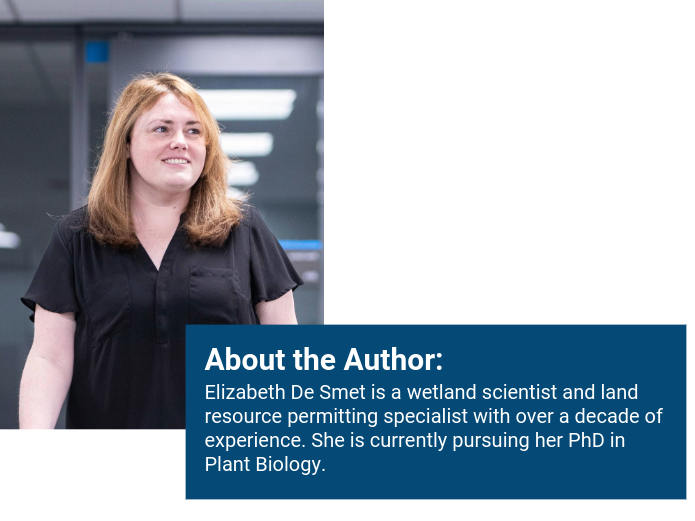SESI is hiring for Geotechnical, Environmental, and Site Civil positions. Apply Now!
The Expanded Jurisdiction of New York State’s Freshwater Wetlands Act
February 14, 2024

The regulatory landscape of wetlands within New York State is undergoing significant changes. The State is working to protect over one million acres of critically important wetlands. The literature regarding these modifications can be difficult to navigate. At SESI, we aim to provide our clients with digestible information that can help guide you through your upcoming projects. To best understand these shifts it is important to understand the history of wetland regulation within the state.
In 1972, the federal government took a major step to protect the nation’s wetlands through the implementation of Section 404 of the Clean Water Act. These regulations are upheld by five federal agencies with different missions that are reflected in each agency’s authority for wetland protection. These agencies and the areas over which they hold regulatory authority are as follows:
| Corps | US Army Corps of Engineers | Regulatory authority of navigation & water supply |
| EPA | U.S. Environmental Protection Agency | Protector of wetlands, primarily for their contributions to chemical, physical, & biological integrity of the Nation's waters |
| FWS | U.S. Fish and Wildlife Service | Juristiction related to managing fish and wildlife-game species and threatened l endangered species |
| NOAA | National Oceanic & Atmospheric Administration | Responsible for managing the Nation's coastal resources |
| NRCS | Natural Resources Conservation Services | Focused on wetlands affected by agricultural activities |
In addition to the federal regulations, many states have implemented wetland laws. New York is among those with the most comprehensive programs. The New York regulations encompass many activities that affect wetlands exempt from the Clean Water Act, Section 404 Program.
In 1975 the New York State Legislature passed the Freshwater Wetlands Act (Environmental Conservation Law Article 24) with the intent to preserve, protect, and conserve freshwater wetlands and their benefits. The Act identified wetlands primarily based on hydrophytic vegetation, which is flora adapted to growing in low-oxygen (anaerobic) conditions, associated with prolonged saturation or flooding.
After 47 years, significant revisions to New York’s Freshwater Wetlands Act were signed into law in 2022. An understanding and awareness of these changes is vital in navigating regulatory hurdles and these delicate landscapes as you approach purchasing properties and designing projects.
The first impact of these amendments came on January 1, 2023, when permit application fees increased to reflect the nature of the application review and ensure funds are available to wetland resource protection activities. Several upcoming dates are important to keep in mind in the changing climate of New York wetland regulation:
- January 1, 2025, will see the expansion of the New York State Department of Environmental Conservation regulatory jurisdiction beyond the limits of the current Freshwater Wetland Maps utilized by the State as well as the regulation of small wetlands of “unusual importance.”
- January 1, 2028, will commence the decrease in regulated size threshold from 12.4 acres to 7.4 acres.

While these two dates are vital in maintaining compliance with the evolving regulations, several additional modifications are also important to note. A summary of the major changes to Article 24 by year of implementation follows:
January 1, 2025
- The existing freshwater wetland maps will no longer be regulatory- rather, the State will be primarily relying on available aerial imagery and remote data to determine the presence of State-regulated freshwater wetlands on a parcel.
- Smaller wetlands meeting one or more of the newly established statutory criteria will be regulated and categorized as having “unusual importance.” These criteria include:
- Potential for Significant Flooding: Freshwater wetlands located within a subwatershed+ or 12-digit Hydrologic Unit Code (HUC) that has 2% or more impervious surface, less than 5% of its surface area is comprised of floodwater storage, and is located within 4 kilometers of an urban area.
- Rare Animals: Freshwater wetlands that contain habitat for an essential behavior (e.g. breeding, nesting, roosting, foraging, sheltering, migrating, or overwintering) of an endangered or threatened species, a species of special concern, or a species of greatest conservation need.
- Vernal Pools: Vernal pools known for productive amphibian breeding. Determining the productivity of a habitat is variable across regions of the State depending on the presence of amphibian egg masses.
- Local or Regional Significance: Freshwater wetlands that have functions and values (e.g. water quality improvement, floodwater storage, fish and wildlife habitat, aesthetics, and biological productivity) within a Critical Environmental Area (CEA) within the Adirondack Park.
- Class I Wetlands: Wetlands that provide habitat for an essential behavior of an endangered or threatened animal species, contain an endangered or threatened plant species, are located within or are contiguous with a designated Significant Coastal Fish and Wildlife Habitat area, are tidally influenced regardless of their regulation status under Article 25 of the Environmental Conservation Law, contain a wetland plant community identified as critically imperiled, are nutrient-poor, are located within a designated floodway, and/or are contiguous to fresh surface waters classified as A, AA, AA-S, A-S, A(t), A(ts), AA(t), AA(ts), or N.
- Extending adjacent areas of 300 feet to serve as buffers or transition areas around nutrient-poor wetlands+.
January 1, 2028
- The threshold for acreage to constitute a regulated wetland will decrease from 12.4 acres to 7.4 acres in 2028.
Though these changes seem to overhaul the current regulatory landscape of wetlands within New York, over one million acres of critically important freshwater wetlands are currently unmapped and many smaller wetlands go unregulated. Wetlands offer an array of advantages for development as outlined in a previous post entitled Managing Natural Impacts by Engineering with Nature – The Wetlands. As always, SESI is cognizant of changes to agency activities and is abreast of changing regulations. We are here to help you navigate these regulation modifications and maintain compliance in the proximity of these vital resources.
Nutrient-Poor Wetlands:
Wetlands that have specific pH and nutrient composition which display the potential for significant ecological deterioration if input of additional nutrients occurs. The DEC has identified several plant community types which fall under this definition including: black spruce-tamarack bog, coastal plain Atlantic white cedar swamp, coastal plain pond shore, coastal plain poor fen, dwarf shrub bog, highbush blueberry bog thicket, inland Atlantic white cedar swamp, inland poor fen, marl fen, medium fen, northern white cedar swamp, perched bog, pitch pine-blueberry peat swamp, red maple-tamarack peat swamp, rich graminoid fen, rich hemlock-hardwood peat swamp, rich shrub fen, rich sloping fen, seal level fen, sedge meadow.
Watershed:
A watershed is simply the land that water flows across or through on its way to a common stream, river, or lake.
Subwatershed:
A subwatershed is a small watershed which nests inside of a larger watershed.








